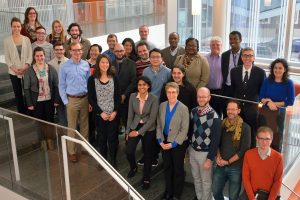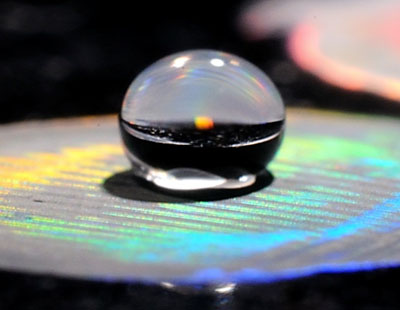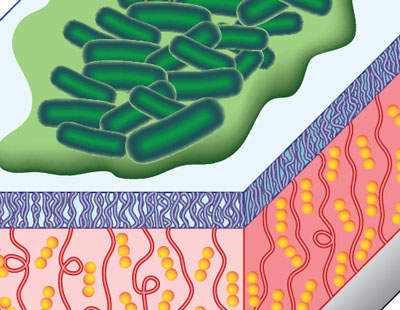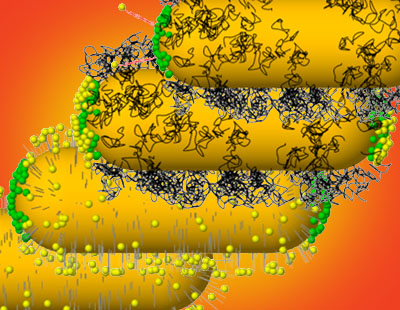ABOUT REACT

React for human habitat is a Partnerships for International Research and Education (PIRE) project funded by the National Science Foundation (NSF), the School of engineering and applied science (SEAS) at the University of Pennsylvania, aimed at Research and Education in Active Coatings Technologies (REACT) for human habitat. This PIRE project addresses key fundamental research challenges through an international educational platform to develop Active Coating Technologies (ACTs) that divert, collect and purify water (ACT 1), suppress bacteria adhesion and proliferation (ACT 2), and convert and store solar energy (ACT 3). To enable coatings that will transform the human habitat, the three ACTs take advantage of the versatility provided by polymers, nanoparticles and their mixtures to create coatings with tailored chemistry, surface texture and function.
REACT's NSF PIRE funding ended August 2022. Research in the publication pipeline is expected to be published through 2023. Publications resulting from this program at the end of 2022 are listed here. Our NSF award page also provides research- and education-related outcomes.
One outcome that builds on REACT is a pilot project on extreme urban heat. We are excited to see where this will go.
REACT Participants
 The University of Pennsylvania (Penn) and US Partners, Alabama State University (ASU), Villanova and Bryn Mawr College (BMC) (total of seventeen faculty participants) have formed an international partnership with fourteen collaborators from six institutions within the Grenoble Innovation for Advanced New Technologies (GIANT) in Grenoble France, which includes National Center for Scientific Research (CNRS), Alternative Energies & Atomic Energy Commission (CEA), Institut Laue Langevin (ILL), and European Synchrotron Radiation Facility (ESRF). Solvay, our industrial partner with centers near Penn and GIANT, provides unique educational opportunities. Trainees will be engaged in an interdisciplinary and international research environment while participating in educational and professional development activities resulting in a new cadre of US scientists poised to be international scientific leaders. view all participants
The University of Pennsylvania (Penn) and US Partners, Alabama State University (ASU), Villanova and Bryn Mawr College (BMC) (total of seventeen faculty participants) have formed an international partnership with fourteen collaborators from six institutions within the Grenoble Innovation for Advanced New Technologies (GIANT) in Grenoble France, which includes National Center for Scientific Research (CNRS), Alternative Energies & Atomic Energy Commission (CEA), Institut Laue Langevin (ILL), and European Synchrotron Radiation Facility (ESRF). Solvay, our industrial partner with centers near Penn and GIANT, provides unique educational opportunities. Trainees will be engaged in an interdisciplinary and international research environment while participating in educational and professional development activities resulting in a new cadre of US scientists poised to be international scientific leaders. view all participants THREE ACTS
ACT 1. Hierarchical Structures for Water Management

This act aims to develop new active technologies for water purification and management. Shu Yang and Robert Riggleman are the co-leaders of this act. They collaborate with Daeyeon Lee, Randall Kamien, Kathleen Stebe, Gang Feng (Villanova), Arjun Yodh to achieve these goals. GIANT partners Michel Langlet , David Riassetto , and Celine Ternon , and Solvay partner Remi Dreyfus also participate in research and educational activities of this act.
ACT 2. Prevention of Infection Transmission
 This act aims to produce anti-bacterial coatings to prevent infection transmission. Daeyeon Lee and Mamie Coates (ASU) are the co-leaders of this act. They collaborate with Russell Composto, David Eckmann, Shree Singh (ASU) to achieve these goals. GIANT partners Franz Bruckert , Catherine Picart, Thomas Boudou , and Marianne Weindenhaupt also participate in research and educational activities of this act.
This act aims to produce anti-bacterial coatings to prevent infection transmission. Daeyeon Lee and Mamie Coates (ASU) are the co-leaders of this act. They collaborate with Russell Composto, David Eckmann, Shree Singh (ASU) to achieve these goals. GIANT partners Franz Bruckert , Catherine Picart, Thomas Boudou , and Marianne Weindenhaupt also participate in research and educational activities of this act.
ACT 3: Self-assembled Nanomaterials for Energy Generation and Storage
 This act aims to produce flexible coatings using self-assembled nanomaterials for energy storage and harvesting. Chris Murray, Karen Winey, and Zahra Fakhraai are the co-leaders of this act. They collaborate with Russell Composto, Dan Gianola, Robert Riggleman, and Karen Winey to achieve these goals. US partners Gang Feng (Villanova), Amy Fleischer (Villanova), Xuemei Cheng (Brynmawr), GIANT partners Patrice Rannou (co-leader), Bertrand Donnio , Trevor Forsyth, Giovanna Fragneto, Didier Gasparutto, Lionel Picard , Said Sadki. Solvay, Vincent Finsy, and Veronique Mathieu also participate in research and educational activities of this act.
This act aims to produce flexible coatings using self-assembled nanomaterials for energy storage and harvesting. Chris Murray, Karen Winey, and Zahra Fakhraai are the co-leaders of this act. They collaborate with Russell Composto, Dan Gianola, Robert Riggleman, and Karen Winey to achieve these goals. US partners Gang Feng (Villanova), Amy Fleischer (Villanova), Xuemei Cheng (Brynmawr), GIANT partners Patrice Rannou (co-leader), Bertrand Donnio , Trevor Forsyth, Giovanna Fragneto, Didier Gasparutto, Lionel Picard , Said Sadki. Solvay, Vincent Finsy, and Veronique Mathieu also participate in research and educational activities of this act.






